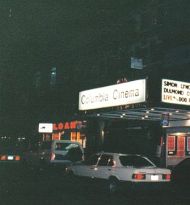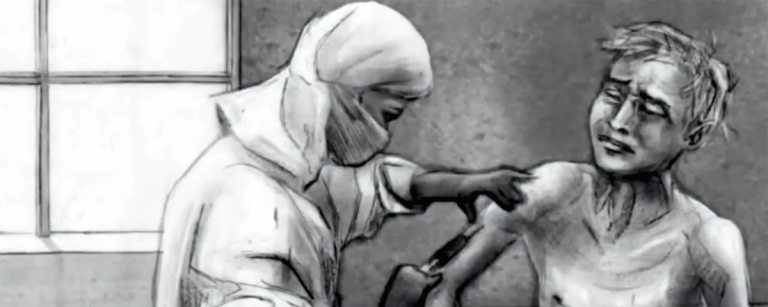When Faith in Graffiti Reigned
Take one look at the man depicted in Twist’s “Corporate Pigs” piece and you see not only the power of graffiti, but also the potential. The notion that a random message left by an anonymous source can inspire or anger a public audience. It’s what I saw as a teenager, the idea that you could…

Before Barry McGee transcended the boundaries of graffiti and began exhibiting in national and international galleries, he was simply known as Twist — a prolific tagger from San Francisco. This is, of course, no revelation. But it bears repeating as a point of origin. Today anyone with an Internet connection can learn the trajectory of McGee’s career in a few seconds thanks to the power of a search engine, or the endless echo of the blogosphere. But tracing a moment of discovery, especially one dating back to the days before the Internet, is like sifting through a box of childhood mementos.
I first learned about Twist back in 1991, when I saw photos of his work in a graffiti zine called City Slicker, published out of Pittsburgh. I was 14 years old at the time and already consumed by an obsession with graffiti. The idea that there was this parallel world of anonymous people writing messages on walls fascinated me. Driving through the city, I would look out the window of my father’s Chevy and see graffiti scrawled everywhere. Tags from Sire, Vex, and Force were written in black marker on light posts and switch boxes in East Liberty. Necske and Sesk tags lined the walls and metal signs along Allegheny River Boulevard as it wove past the Pittsburgh Zoo and turned into Butler Street before dropping in to Lawrenceville. And then there was Serg, whose name was everywhere — from walls on the North Side and downtown, to every clean surface in Oakland and Shadyside, and even emblazoned on railroad trestles and highway underpasses in the outer reaches of the eastern suburbs.
What I saw fascinated me. And I wanted to know everything I could.
Back then, however, graffiti was light years away from the commercialized global subculture it has become. Information was scarce and picked up wherever you could find it. Books like Spraycan Art and Subway Art were primary source material for years. And the film Style Wars was influential. But finding a copy of that film was nearly impossible, especially for a teenager with limited resources. That’s what made City Slicker so special. It not only made me aware that there was a strong national graffiti scene, it introduced me to the concept of zines — two things I still follow and collect as an adult.
Last week, I stumbled upon a photo of Twist’s “Corporate Pigs” piece on Sean Stewart’s Babylon Falling blog. It reminded me of when I first saw Twist’s work. There’s no date associated with the photo, but it has all the hallmarks of his pieces from the early 1990s.
Twist’s perspective is what made him stand out in that zine I pored over as a teenager. His handstyle was classic, written with the authority of a man who had spent untold hours leaving his name in the street. And the confident lines of his letters seemed to be achieved with a special cap and can handed down from some almighty power. But what most attracted me to his work were the characters. Painted in black and white, and shaded in a way that gave incredible depth and weight, these characters embodied such deep emotions. Twist excelled at rendering poignant images of sad businessmen, wide-eyed buffoons, and societal outsiders. In fact, he still does.
Take one look at the man depicted in Twist’s “Corporate Pigs” piece and you see not only the power of graffiti, but also the potential. The notion that a random message left by an anonymous source can inspire or anger a public audience. It’s what I saw as a teenager, the idea that you could be a fuck-up or an introvert or a total asshole and still say what’s on your mind. In a world that’s noisier and more crowded than ever, however, I wonder if messages like this even matter anymore. ![]()





